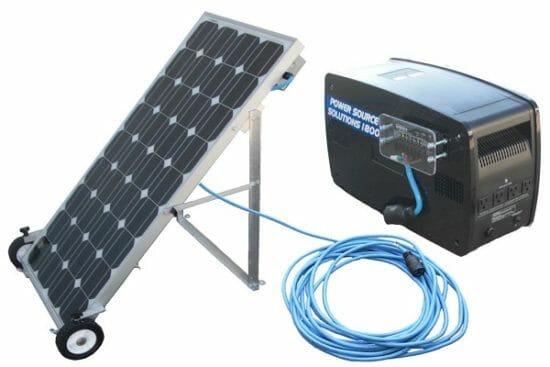3.9
- Webinar No: WBNR 1141
- PDH Units: 2
No data found for Custom Course Number
No data found for Custom Course Units
3.9
- Webinar No: WBNR 1141
- PDH Units: 2
Intended Audience: Electrical, Energy and Environmental Engineers
Credits: 2 PDH Units
When: Monday 11/20. 3 - 5 pm ET
This 2-hour interactive presentation covers all design and operation considerations of DC-Coupled, and AC-Coupled grid-interactive battery-backup PV systems. It has been developed as a follow-up to designing straight grid-connected PV system (no battery backup). References: Messenger & Abtahi, Photovoltaic Systems Engineering, 4th Edition, CRC Press, Boca Raton, FL 2017. Component data sheets.
Date: Monday. November 20. 2023. 3 - 5 pm ET Credits: 2 PDH Units
Learning Objectives
Upon completion of the Webinar, Participants should understand the design process for the two most popular configurations for battery-backup, grid-connected Photovoltaic Systems. The Webinar includes how to select all system components and integrate them into a system with desired performance, regardless of whether grid power is available to the system. Systems to be designed include:- A 120/240 V system built around a set of designated standby loads. The design will include selection of desired standby loads, inverter, batteries, options for sizing the PV array, PV module selection and wiring, temperature correction, all wire and overcurrent protection sizing and voltage drop calculations and other National Electrical Code requirements.. Array mounting and wind load calculations will also be presented. Finally, system operation setpoints will be discussed.
- The second system discussed will take an alternate approach to determining all the parameters covered in the first design. This system will start with the selection of an array to fit on a roof and then proceed to determine a possible set of standby loads that can be operated by the array and remaining system components.
- The next design example will be an AC-Coupled system based upon converting an existing straight grid-connected system with no battery backup to a battery backup system while retaining the original PV array and inverter. A 3-phase AC-Coupled system will also be presented.
- Power Walls and other new systems will also be presented along with a vision of likely future developments in PV systems that incorporate energy storage.
Special Webinar Instructions
After payment, please visit this webinar page, click "Start Course" and fill out the Webinar Registration Form. You'll receive email notification and details on how to join the webinar. You will then be able to access the webinar slides, test your system and receive webinar reminders. After completing the webinar requirements, your certificate of completion will be saved and available for download in your profile. We value your feedback! Please rate this webinar after completion.Group Discounts Available
Course Reviews
3.9
3.9
25 ratings - 5 stars9
- 4 stars9
- 3 stars4
- 2 stars2
- 1 stars1
Once completed, your order and certificate of completion will be available in your profile when you’re logged in to the site.
Ethics Courses
Webinar No: WBNR 1141
PDH Units: 2











Too advanced for non electrical engineers. Do you have a basic Electrical course?
Too much info for 1 hour
Presentation not aligned with quiz. Presentation material was not well organized.
This was helpful to me
There were too many component interactions to digest in such a short period of time. I realize that this was an introductory overview, but a more quantitative approach would have piqued my interest even more than it did. The Professor performed an amazing feat!
I learned a lot regarding the changes that have happened from earlier times of PV system design.
Great class again by Professor Messenger. The website, however, is very hard to navigate and is costing me a lot of extra time. Had a hard time getting into the class, and now after the class, can’t figure out how to get to the quiz again. Please email links to join the classes and step-by-step instructions as to where to go after the class.
A very professional graduate-style course
Way too deep in the details for non-electrical engineers
Disappointed with this course. Handout material doesn’t match the presented material, need more of the “why” in the handouts (just a bunch of facts that could be gathered elsewhere online.)
I had computer issues.
This webinar is very informative and could be longer….there is so much information to cover to provide the background. Prof. Messenger does a great job of covering the background to provide a full understanding.
Very informative
Prof Messenger did a great job in covering the basics (and details) in the various AC/DC BB PV systems.
Dr. Messenger obviously knows the material and has a lot of practical experience. Two hours is not enough time to teach all the material effectively, and I think the material could have been organized better. For example, the first slide is all about the inverters, before any discussion of the overall system design. I had to go back over the slides multiple times to get a grasp of the information. At least I know what questions to ask a PV design engineer.